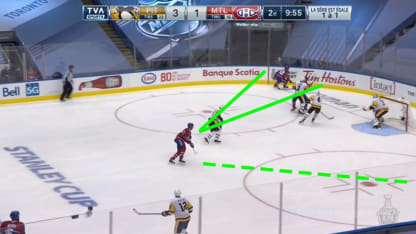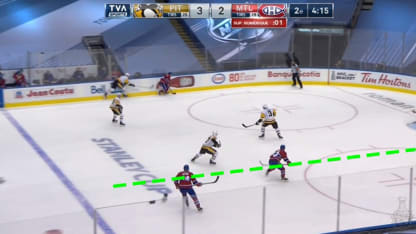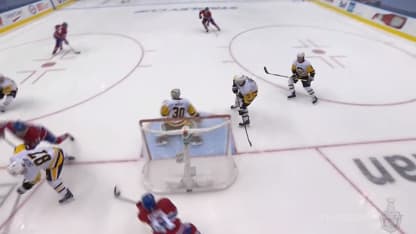Which is why so many coaches put an onus on smart defensive play. Not just to prevent goals -- reactionary defensive play, like plugging holes on a boat. I'm talking about preventative play, where you avoid the rocks that caused holes in the first place. That's the kind of defensive play we saw from the third line on Wednesday night. The type of play that keeps opposing forwards to the outside of high-danger areas, forcing turnovers and creating counter rushes.
We
recently discussed
the impact of the third line in the Penguins series, and I'm happy to report they're still the best 5-on-5 line in the series.
Despite some necessary line shuffling, the trio finished the night by controlling 100 percent of shots, as well as 100 percent of high-danger chances when they were on the ice. Yes, you read that correctly. 100 percent. Now, they didn't spend as much time together as they had in previous games, and we must be mindful of their usage, but some analysts would suggest that controlling 100 percent of the shots is a fairly good outcome. Some would even say it's excellent. Others would offer up the term ridiculous.
And some would even go as far as telling me to put down the thesaurus.
And it's no fluke. Throughout the series, that line has controlled over 70 percent of shots, 85 percent of shots on net, 100 percent of high-danger chances, and they've yet to allow a goal against.
As per usual, it all starts with smart, defensive hockey. That's exactly what we saw from Artturi Lehkonen and Jesperi Kotkaniemi, the former forcing a turnover after the latter supported his defensemen by dropping deep into the defensive zone and applying pressure on the puck carrier.
Full marks to Shea Weber for generating not one, not two, but three high-danger chances on the same play, including the one that gave the Canadiens an
early 1-0 lead
.
It's worth noting that Kotkaniemi leads all Canadiens forwards in shot share, high-danger shot share, and goal share. Some would say that's...well, you probably know where I'm going with this.
He also leads all forwards in hits, which is a very encouraging sign given his line has controlled the puck during the vast majority of his shifts. He's not chasing, he's creating turnovers.
The good news is his confidence seems to be at an all-time high. The bad news is Canadiens fans will have to wait a few more years until he actually hits his statistical prime. Woe is us.
Speaking of Kotkaniemi, his work on the second Canadiens goal was yet another example of his ability to improve on perceived weaknesses. He has the size and the reach, but in his first two seasons, he did not always show the kind of speed needed to quickly pounce on loose pucks and avoid intense 1-on-1 battles.
Not only did he win a faceoff cleanly, a crucial offensive zone faceoff against Evgeni Malkin, he also used his foresight to predict where the puck would end up, quickly corralling the puck and keeping the play alive for the Canadiens.






















